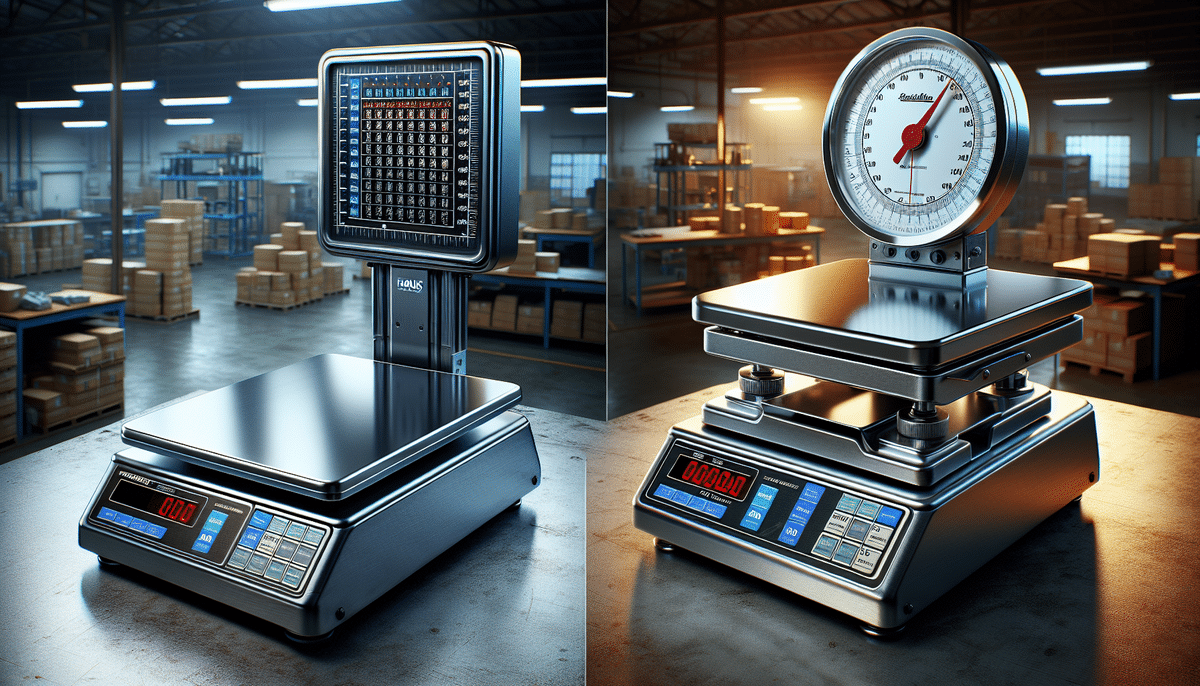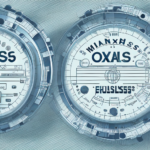Ohaus D51XW vs Rice Lake RoughDeck: In-Depth Comparison for Industrial Weighing Needs
Choosing the right industrial scale is crucial for businesses that rely on precise weight measurements. Two leading options in the market are the Ohaus D51XW and the Rice Lake RoughDeck. Both scales are renowned for their durability and accuracy, but they cater to different applications and requirements. This comprehensive comparison will delve into their features, performance, pricing, and user feedback to help you make an informed decision.
Product Overview
Ohaus D51XW Industrial Scale
The Ohaus D51XW is designed for versatility and precision in a compact form. It features a rugged stainless steel platform and a high-resolution display, making it suitable for a wide range of industrial applications. With multiple connectivity options such as RS232, Ethernet, and USB, the D51XW integrates seamlessly into various operational setups.
Rice Lake RoughDeck Industrial Scale
The Rice Lake RoughDeck is engineered for heavy-duty applications requiring high capacity and exceptional accuracy. Its robust construction can handle weights up to 40,000 lbs, making it ideal for industries like manufacturing, shipping, and logistics. The RoughDeck employs advanced load cell technology to ensure reliable measurements even in harsh environments.
Key Features Comparison
Ohaus D51XW Features
- Rugged stainless steel platform for enhanced durability
- Bright, high-resolution display for easy readability
- Customizable checkweighing settings to improve accuracy
- Connectivity options: RS232, Ethernet, USB
- Battery power option for remote and portable applications
The D51XW's user-friendly interface with intuitive menu navigation and clearly labeled buttons makes it easy to operate, reducing the learning curve for new users.
Rice Lake RoughDeck Features
- High weight capacity up to 40,000 lbs
- Advanced load cell technology for precise measurements
- Self-checking software for streamlined calibration and maintenance
- Durable construction with various high-strength coating options
- Connectivity options: RS232, Ethernet, Wi-Fi
The RoughDeck's large, backlit display ensures visibility in all lighting conditions. Safety features such as a non-slip surface, overload protection, and audible alarms enhance operational safety.
Performance and Accuracy
Capacity and Precision
The Rice Lake RoughDeck offers a superior weight capacity of up to 40,000 lbs with an accuracy of ±0.1%, making it suitable for heavy-duty industrial applications. In comparison, the Ohaus D51XW supports up to 5,000 lbs with an accuracy of ±0.02%, ideal for applications requiring high precision over smaller weight ranges.
According to industry reports, the accuracy and reliability of these scales are critical for maintaining quality control and operational efficiency. Businesses should assess their weight measurement needs to choose the scale that aligns with their operational demands.
Durability and Build Quality
Both scales are built to withstand demanding industrial environments. The RoughDeck's larger platform and robust construction are designed to endure continuous use in settings exposed to dust, moisture, and heavy wear. The Ohaus D51XW, while slightly less heavy-duty, offers a stainless steel platform that is suitable for controlled environments like laboratories and production lines.
“Durability in industrial scales translates to reduced downtime and maintenance costs,” notes a report by EFESpec, an authority in industrial equipment standards.
Pricing and Value Proposition
The Ohaus D51XW is generally more affordable, making it a cost-effective solution for businesses that require precision without the need for extreme weight capacities. Its compact size also makes it a suitable choice for operations with limited space.
On the other hand, the Rice Lake RoughDeck comes at a higher price point, justified by its extensive weight capacity and advanced features. For industries that demand high-volume and high-accuracy measurements, the RoughDeck offers greater value despite the initial investment.
For a detailed pricing analysis, refer to industry pricing guides such as those provided by WBDG (Whole Building Design Guide).
User Reviews and Feedback
Feedback from users highlights the reliability and performance of both scales:
Ohaus D51XW Reviews
- “The D51XW is incredibly versatile and easy to integrate into our existing systems. Its connectivity options have streamlined our weighing processes significantly.” – Manufacturing Manager
- “Compact and durable, perfect for our lab environment. The high-resolution display makes weight verification quick and accurate.” – Laboratory Technician
Rice Lake RoughDeck Reviews
- “The RoughDeck handles our heavy loads with ease and provides consistent accuracy, even in our rugged warehouse.” – Warehouse Supervisor
- “Advanced load cell technology ensures we maintain precise measurements, which is critical for our quality control.” – Quality Assurance Specialist
Maintenance and Calibration
Ohaus D51XW Maintenance Tips
- Regular Calibration: Follow the manufacturer's guidelines to calibrate using certified weights.
- Cleanliness: Keep the platform and load cells free from debris to maintain accuracy.
- Software Updates: Periodically update the firmware to enhance functionality and security.
Rice Lake RoughDeck Maintenance Tips
- Scheduled Calibration: Implement routine calibration checks to ensure ongoing precision.
- Protective Coatings: Maintain any high-strength coatings to prevent corrosion and wear.
- Training: Ensure maintenance personnel are trained in handling advanced load cell technology.
Conclusion: Which Scale Suits Your Business?
Both the Ohaus D51XW and the Rice Lake RoughDeck are exceptional scales tailored to different industrial needs. If your business requires high precision with moderate weight capacities and values affordability, the Ohaus D51XW is an excellent choice. Conversely, for operations demanding high weight capacities and robust durability in challenging environments, the Rice Lake RoughDeck stands out as the superior option.
Assessing your specific requirements in terms of capacity, accuracy, durability, and budget will guide you in selecting the scale that best aligns with your operational goals.






















